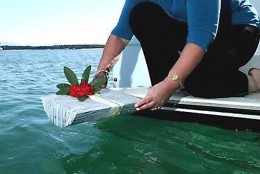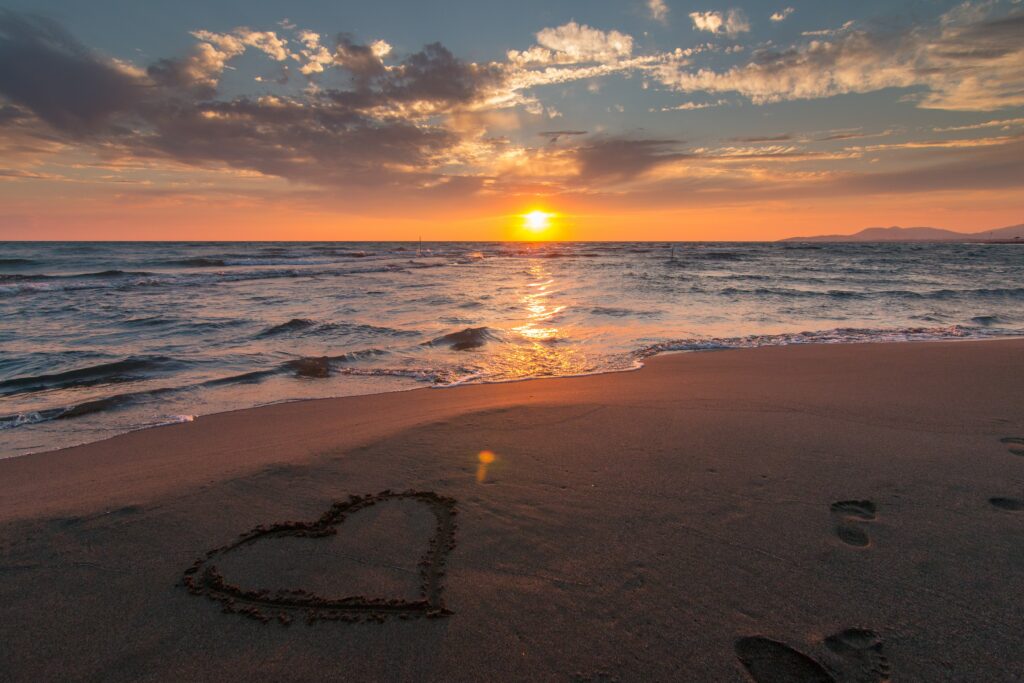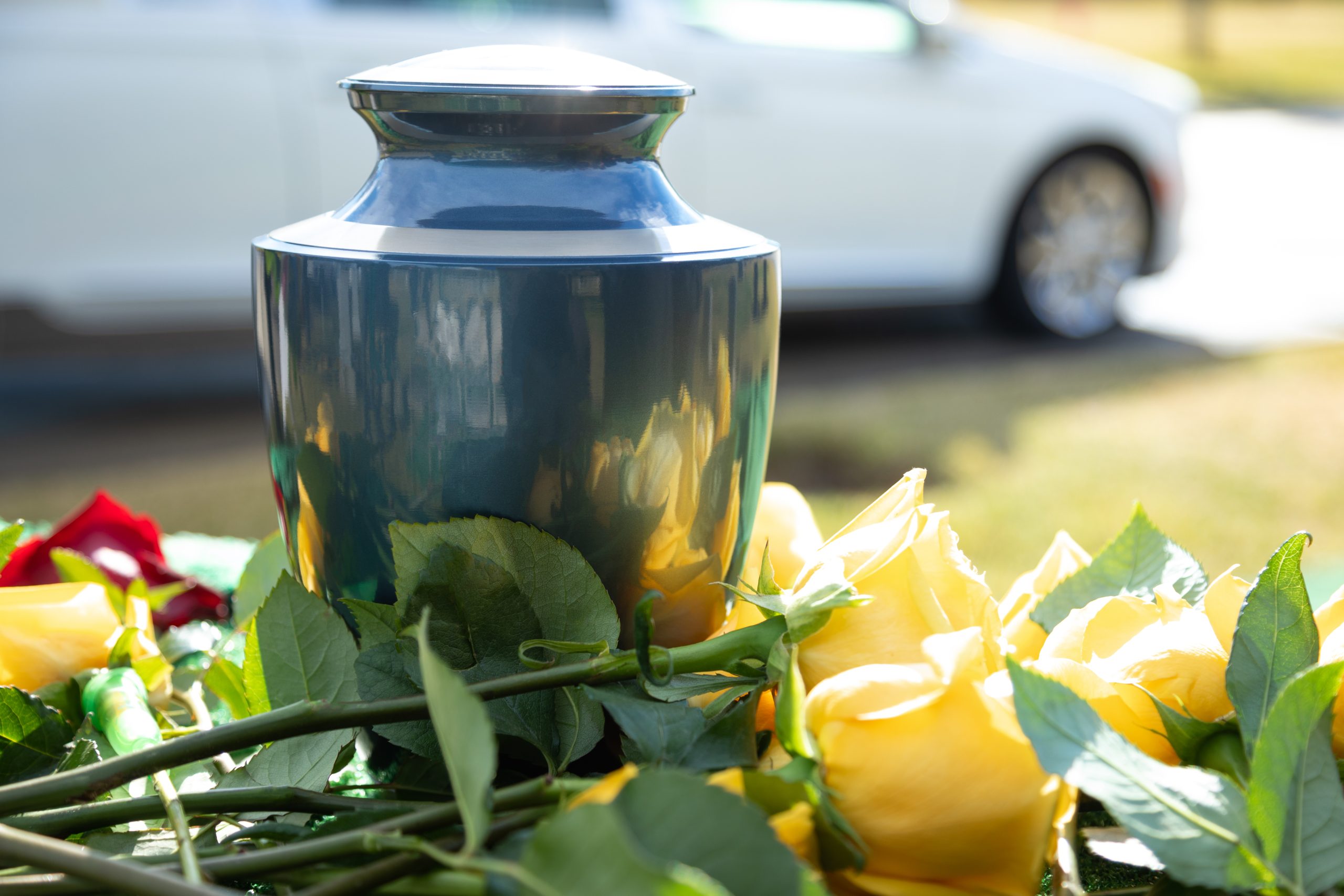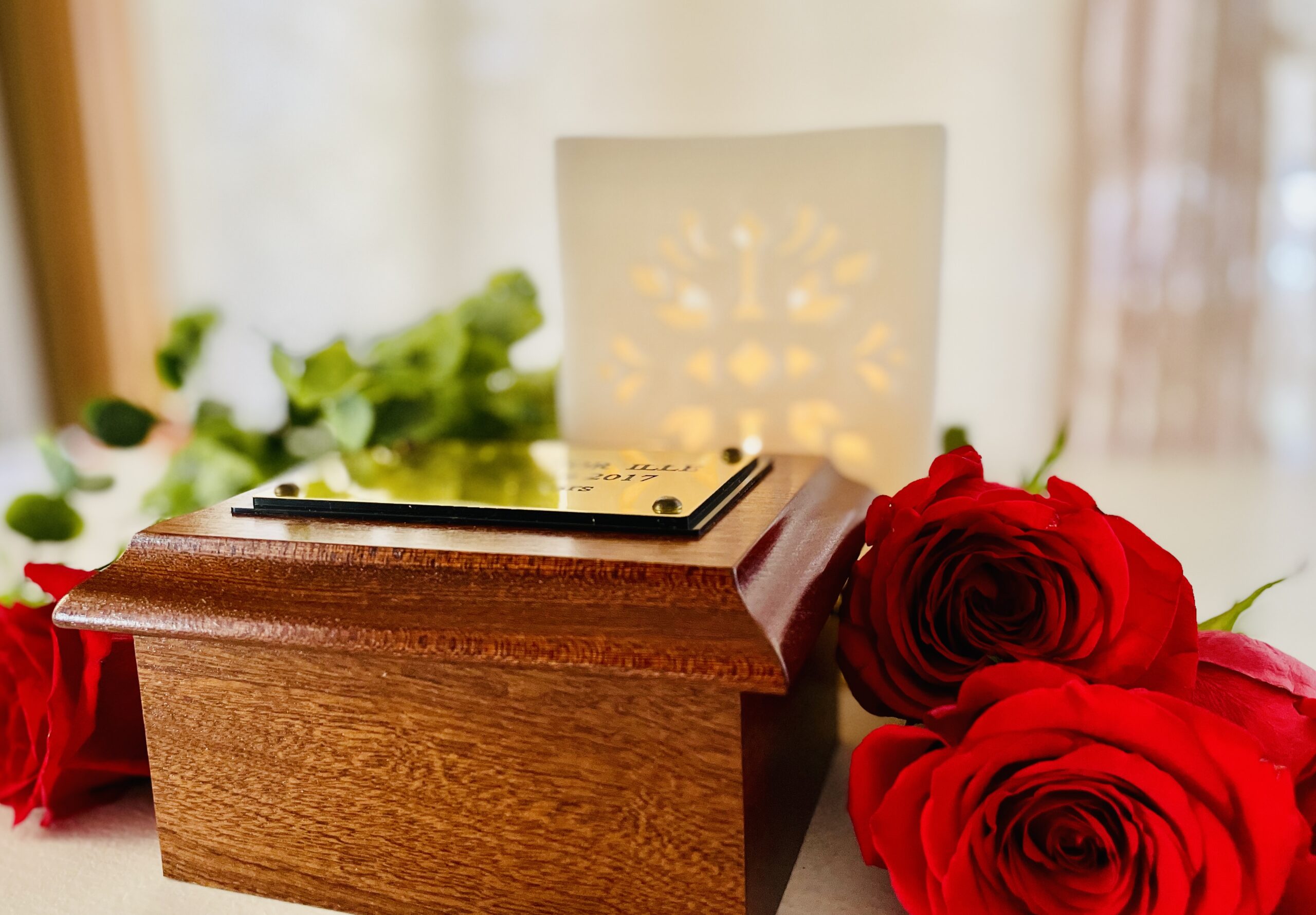Suppose you opted for a cremation service for a family member and are considering an ash-scattering memorial. In that case, this ash-scattering guide will walk you through the safe way to scatter cremation ashes, the different options available to you, the laws on scattering cremated remains, and what service providers offer scattering service options.
How to scatter ashes safely

Firstly, let’s consider how important it is to safely scatter cremated remains. Cremation ashes are sterile, organic matter, so it is safe to disperse them into the environment. However, there are some important points you need to consider if you are planning on scattering a loved one’s cremation ashes.
If you plan to personally scatter by dispersing the ashes into the air, ocean, waterway, or ground, here are some tips to ensure you can scatter the remains safely and respectfully.
Remember the texture of cremated remains & how this affects the dispersal.
Cremains are the crushed bone fragments that remain after cremation. The cremation ashes are not always uniform in texture. The cremation ash can contain ashes that are as light as dust or powder and will easily disperse, but there can be more coarse pieces that will not as easily disperse.
Sometimes, cremated remains may ‘clump’ together inside a cremation container, especially if the ashes have been sitting in an urn for some time. It may be advisable to check the consistency of the ashes. You can gently shake the urn or use a tool (like a wooden spoon) to carefully check, stir, and separate the cremated remains if they seem ‘lumpy.’
Consider wind direction before the dispersal of ashes

If you plan to empty cremains from a container or urn, bear in mind the wind direction. The light, powder-like cremains can easily blow back on you as you empty the container.
Remember the Big Lebowski moment where the ‘Dude’ played by Jeff Bridges, ends up covered in Donnie’s ashes as they scatter them from a coffee tin on the Pacific coast?
This is definitely NOT how an ash-scattering should go.
Aside from the fact that there is an ick factor in being covered with cremated remains, it is also not safe to have cremated remains blow into your eyes. It is possible small particles (as they are bone fragments) could be sharp and irritate the eyes.
So, rule #1…. Check the wind direction before you empty the cremation urn!
If a group is gathered to disperse the ashes, ensure everyone is together grouped perpendicular to the wind.
Expect some of the cremains to fall as lumps, or a ‘clot,’ of cremated ash.
As mentioned above, it is common for some particles to bind together in the cremation container, which means that not all the ash will disperse as powder. Do not be surprised if some larger particles and lumps of ash fall to the ground as you attempt to disperse. Consider using the tips given above to gently release cremated remains that seem stuck together.
 Only use organic material for any scattering memorial tribute
Only use organic material for any scattering memorial tribute
The cremains are organic, so they are safe for the environment. If you want to do something to accompany the scattering to pay tribute, bear in mind it should also be organic in nature.
For example, some people like to scatter flower petals as they release the ashes or even small handwritten goodbye notes on paper or tissue. Anything that poses no harm to the environment and will naturally decompose is safe and acceptable.
Be respectful of other people’s feelings about ash-scattering
Different folks have differing feelings about scattering ashes. Not everyone is comfortable with it. Although the Catholic Church has now accepted cremation, they still mandate against ash-scattering and that cremated remains should be interred in ‘sacred ground.’
So, be discreet in a public area, and/or choose a time to scatter when not many people are around. Find some distance from the beaten path on a beach or in a public park!
Be mindful of your choice of location for scattering ashes
Be mindful of where you choose to scatter. The laws pertaining to scattering ashes are somewhat vague at present, apart from places that mandate against it or require permits, such as sports grounds, national parks, historic landmarks, etc.
Also, consider the implication of where you opt to scatter in terms of accessibility and long-term access to the site. Some families have no intention of returning to an ash-scattering site, but future generations, at some point, may wish to feel ‘connected’ to a lost family member…….will the location still be there and accessible in years to come?
These points should help you plan a safe ash scattering in which family and friends can participate and pay a fitting tribute to your lost loved one.
Check out your State Funeral Planning Guides on US Funerals Online for local ash scattering guidance in your state. Each state guide has a section covering any local laws or popular ash scattering sites.
Where can I scatter ashes?
This is a BIG question! There are actually relatively few places that have mandated to prohibit scattering cremated remains. So, apart from some Sports Grounds, Historic Landmarks, and Public Parks, you have a lot of choices. Because of several wildcat* scatterings in recent years, a number of places that were popular for this type of wildcat scattering have now prohibited it.
These are places like football or baseball grounds, race tracks, and big public parks like Central Park in NYC.
Most National Parks will permit the scattering of ashes so long as the points raised above about safe scattering are observed. There are a few parks that require the family to fill in a permit before scattering the cremains.
Any private land merely requires the permission of the landowner, and many clubs or outdoor business locations, have seen the benefit of embracing the demand for ash-scattering. For example, many golf courses will facilitate the scattering of ashes on a favorite hole.
Scattering at the ocean side or out at sea is a common practice in those states that are coastal. This can take 2 forms: dispersing the ashes on the beach or from rocks or taking a boat out to sea.
Scattering ashes on the beach or ground
Creating a trench for cremation ashes:
Trenching is the term for digging a shallow trench to put the cremated remains in. The ashes can be emptied directly into the trench, or a biodegradable urn can be buried in the trench. This is the closest compromise to a traditional burial. It can be done at a bespoke green cemetery or in a natural green place.
This is generally done at low tide at a beach, allowing the ashes to wash into the ocean as the tide comes in.
Points to consider:
- Ensure you take the correct tools to dig a suitable trench, bearing in mind the ground you need to open.
- Generally, about a foot is deep enough to bury a biodegradable urn or disperse the ashes into.
- If you wish to place a memorial marker, ensure it is suitable to the location. Rocks, pebbles, wood, or flowers would be acceptable in most natural landscapes.
Raking the cremated remains into soil or sand:
Raking of ashes is just that! Raking the scattered ashes into loose soil or sand. This exposes the ashes to the elements, so they break down much quicker and absorb into the ground. Organic cremated remains can be raked into topsoil in flower gardens or other natural locales.
Points to consider:
- Use an appropriate tool to rake the cremains into the ground.
- Like trenching, be sure to consider how the location may change over time.
Scattering cremains in water – Ocean, Lake, River, or waterway
Scattering cremated remains in a body of water is probably one of the most popular ways that people choose to scatter cremated remains. And there are so many water options….from scattering ash in the ocean, at a beach, a roaring river, or a peaceful lake.
If you choose to scatter on a beach or from the edge of a lake, it is quite simple to host your own ash-scattering memorial. If a family wishes to go out to sea to scatter or onto a lake, then a boat will be required. Both of these can be done fairly inexpensively, especially if you have your own boat.

There are also a number of charter services that offer sea scatterings. A scattering of ashes at sea can be either accompanied or unaccompanied.
Some charter companies offer unaccompanied sea scattering services at an affordable price, as they can take out several remains in one charter to perform sea scatterings.
A chartered accompanied sea scattering can cost anything upwards of $450, depending on the size of the boat and the length of the charter. Unaccompanied scattering services can start at around $100 – $150 as an incremental add-on to a cremation package. Generally, the charter will provide the family with the GPS coordinates of the scattering and a sea scattering certificate.
Scattering cremation remains by airplane.
Scattering ashes by air is an option for those who are landlocked. It is not as common as sea scattering, as it requires the specialized services of an airplane and pilot and can be expensive. Air scattering can be accompanied or unaccompanied, but as most services are offered by small planes, it does not suit a large group.
One of the most difficult aspects of air scattering is ensuring that the cremains do not blow back into the cabin. Most air scattering companies that specialize have the equipment to enable the safe dispersal of the ashes without the risk of the cremains blowing into the airplane.

Points to consider:
- Bear in mind that ashes scattered in the air will spread and disperse over a wide area.
- If you have a large family or group that wishes to participate, this option may not be a good fit. If you are set on an air scattering, you could consider an unaccompanied scattering, in which the plane has a video camera attached to record the event.
Laws about scattering cremated remains
As of yet, the scattering of cremains is not especially legislated. Technically, the EPA mandates that a burial (or scattering) at sea should be conducted three nautical miles from the coast.
Cemeteries that offer memorial scattering gardens have their own regulations that families must abide by. If you are considering a public venue, you need to contact the venue and inquire about their regulations.
As cremation and ash-scattering memorials grow in popularity, many places have seen the opportunity arise to embrace the notion of offering memorial services for scattering. For example, golf courses have become popular scattering venues for former members and a great way to memorialize, fertilize, and encourage the family to return to the club!
Some sporting venues have consented to allow the scattering of ashes. As with golf clubs, it has been viewed as a beneficial way to encourage families to have a lasting connection with the venue.
However, several public places have started to prohibit cremains from being scattered within their boundaries. These places also mandate regulations and charges to facilitate the scattering service.
Different types of scattering options
Finally, we must mention there are a few other different scattering options.
Balloon Scattering – This can take 2 forms. Using a hot air balloon to take the cremated remains into the air and then scatter them from the hot air balloon. Or using Eternal Ascent, which offers a service to fill a biodegradable balloon with helium and ashes and release the balloon into the atmosphere. At 30,000 feet, the balloon will freeze and shatter, releasing the ash at a great height. The point to consider is that there is little control over where the balloon will eventually release the ashes.
Shotgun shell firing
You can have the cremated remains added to shotgun shells which can then be fired into the air, and the remains scattered.
Memorial Spaceflight
Celestis is a company that offers a service to blast a capsule with a few grams of cremated remains into space.
Hopefully, this guide has answered some of your questions about scattering cremated remains and gives you some ideas for arranging a befitting ash-scattering tribute for a loved one. If you have any questions about scattering cremains, please contact us, and we will do our best to assist.
For further reading on ash scattering and holding your own memorial tribute service – check out our post on Cremation & Ash Scattering: How Families are Conducting their own Memorial Services.
*Wildcat ash scattering: This term was coined in recent years to describe how families are choosing to do their own scattering of remains, which the funeral industry frowns upon as it takes away the process of memorialization from the industry.
“In the past decade, more than 40 companies have been created to help people scatter ashes legally on land and sea by getting permissions and permits. But most families opt for wildcat scatterings, surreptitiously spreading ashes in favorite parks, stadiums, fishing spots, or wherever else feels meaningful.
Scientists agree that there is no health or environmental hazard from the spread of human ashes. . . . Despite this, theme parks, sports facilities, and other public facilities often discourage the scattering of ashes or decline requests, though some stadiums, typically overseas, designate certain areas where it is permitted.”
– Extract from WSJ Feb 3, 2010, Jeffrey Zaslow in Love, Honor, Cherish, and Scatter.




